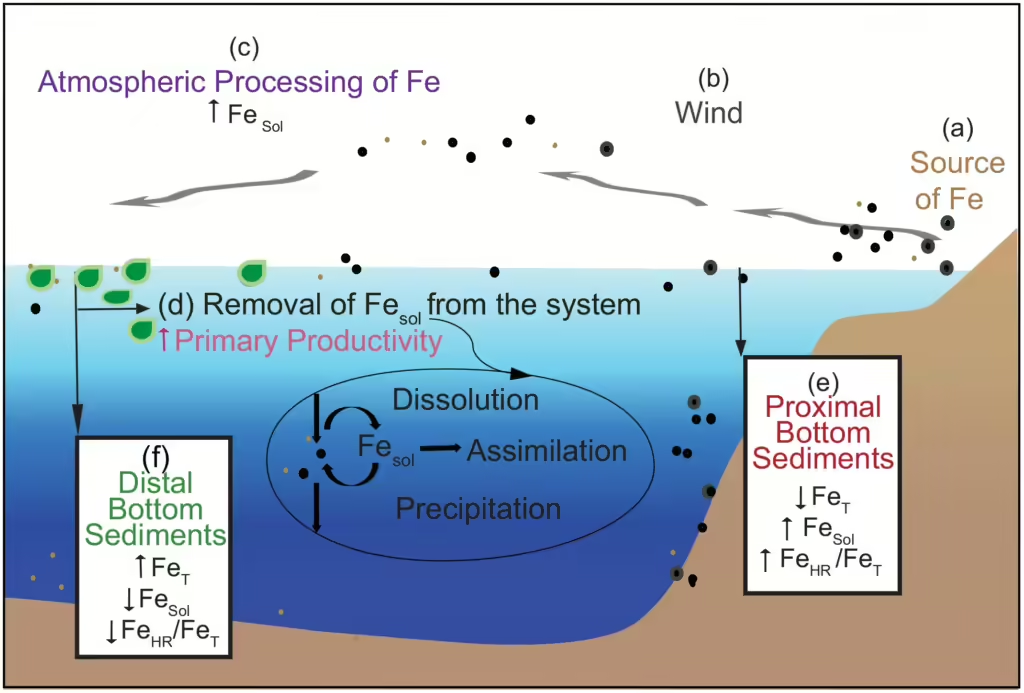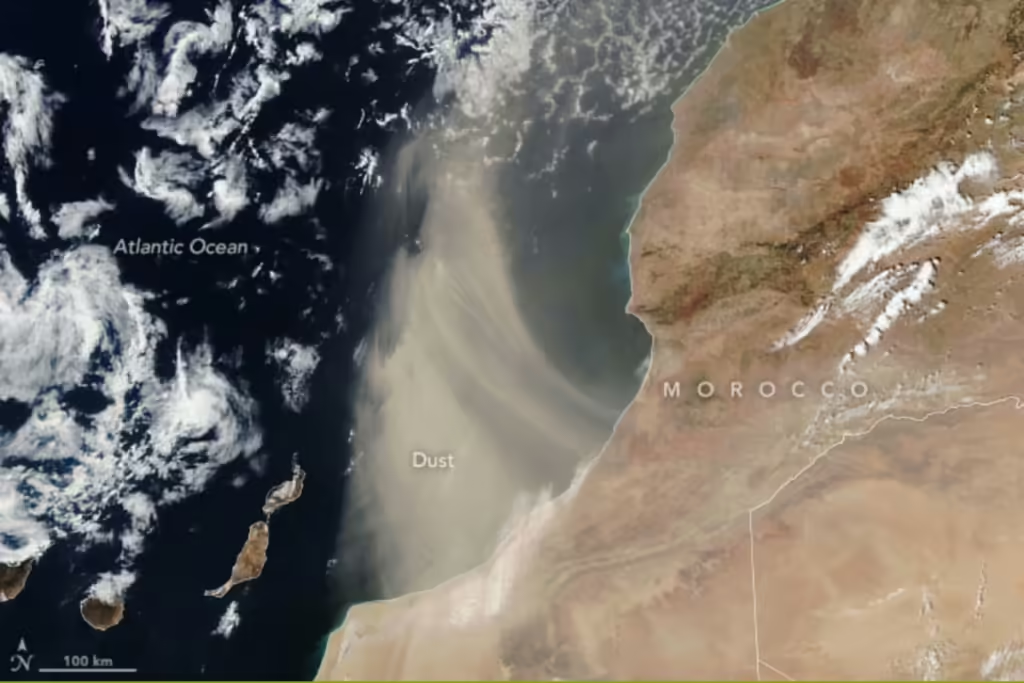
Atmospheric Processes Transform Iron, Supporting Life Far from Its Source
As dust-laden iron journeys from the Sahara across the Atlantic, atmospheric reactions significantly increase its availability as a vital nutrient for marine life. Iron is essential for key biological processes such as respiration, photosynthesis, and DNA synthesis. In today’s oceans, its scarcity often limits carbon fixation by phytoplankton, thereby influencing global climate dynamics.
Iron reaches oceans and terrestrial ecosystems through various means, including rivers, melting glaciers, and notably, wind. However, not all forms of iron are readily accessible to organisms.
“Here we show that iron bound to dust from the Sahara blown westward over the Atlantic undergoes changes in properties with distance traveled: the farther it travels, the more bioreactive the iron becomes,” stated Dr. Jeremy Owens, an associate professor at Florida State University and co-author of a recent study published in Frontiers in Marine Science.
Key Findings of the Study
Owens and his team measured both bioreactive and total iron in sediment cores from the Atlantic Ocean, collected by the International Ocean Discovery Program (IODP). They focused on four cores located at varying distances from the Sahara-Sahel Dust Corridor, a significant source of dust-bound iron.
- Core Locations:
- Two cores were gathered approximately 200 km and 500 km west of northwestern Mauritania.
- A third core was taken from the mid-Atlantic, and the fourth from about 500 km east of Florida.
The researchers analyzed deposits dating back 120,000 years, assessing total iron concentrations and iron isotopes using a plasma-mass spectrometer, confirming the presence of Sahara dust.
They investigated the types of iron in the sediments—such as iron carbonate, goethite, hematite, magnetite, and pyrite—highlighting that while many of these forms are not bioreactive, they likely originated from more bioavailable sources.

Atmospheric Transport and Iron Bioavailability
The study revealed that bioreactive iron was less abundant in the western cores compared to the eastern ones. This suggested that a larger proportion of bioreactive iron had been utilized by marine organisms before reaching the sediments.
“Our results indicate that long-distance atmospheric transport modifies the mineral properties of originally non-bioreactive iron, enhancing its bioreactivity. This iron is then utilized by phytoplankton before settling to the ocean floor,” explained Dr. Timothy Lyons from the University of California at Riverside, the study’s final author.
Implications for Marine Ecosystems
The research concludes that dust reaching regions such as the Amazon Basin and the Bahamas may contain particularly soluble iron, thanks to extended exposure to atmospheric processes.
“The transported iron seems to stimulate biological processes in a manner similar to iron fertilization, affecting ecosystems far from its origin,” Lyons added. “This study confirms that iron-bound dust can significantly influence life across vast distances.”
Reference
“Long-range transport of dust enhances oceanic iron bioavailability” by Bridget Kenlee et al., published in Frontiers in Marine Science, 26 July 2024. DOI: 10.3389/fmars.2024.1428621
Funding
This research was supported by the U.S. National Science Foundation, NASA Exobiology, the Alfred P. Sloan Foundation, the NASA Astrobiology Institute, and the NASA Interdisciplinary Consortia for Astrobiology Research.


